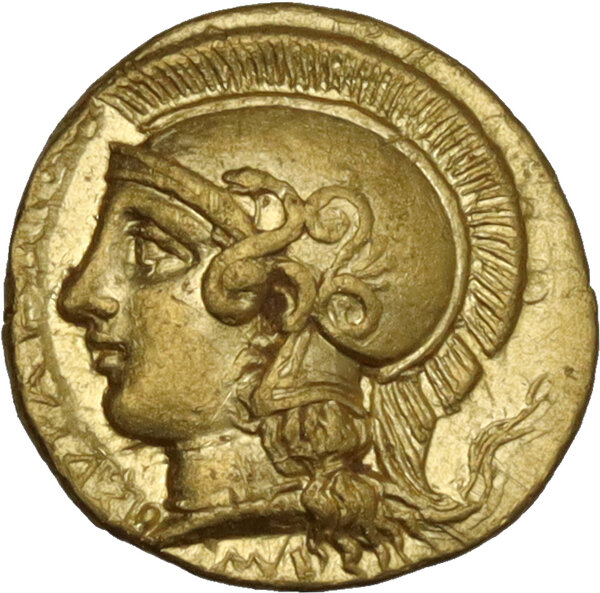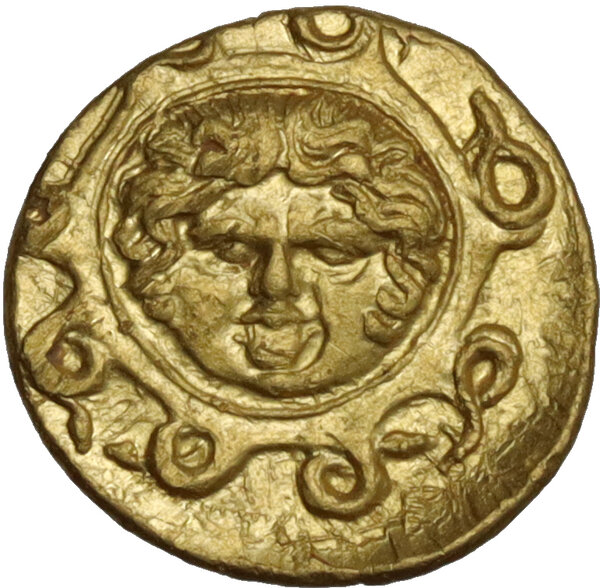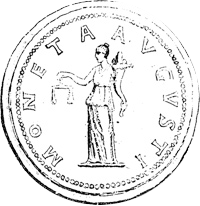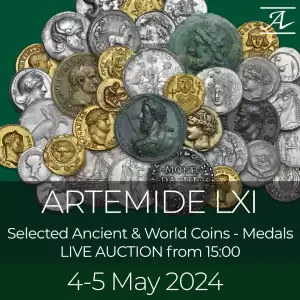Signed by MI Master


Sicily. Syracuse. Second Democracy (466-405 BC). AV Dilitron. Struck circa 406/5 BC. Obverse die signed by the artist IM. Obv. ΣVPAKOΣIΩN. Head of Athena left, wearing crested Attic helmet decorated with a coiled serpent and a spiral palmette on the bowl; below, MI (signature). Rev. Aegis with facing gorgoneion in centre. HGC 2 -; Boehringer, Münzprägungen, p. 66, pl. 1, 5; Fischer-Bossert, Coins, p. 68, n. 119. 1.73 g. 11.40 mm. RRR. Extremely rare, few specimens known. Full signature visible. Good EF. This rare Syracusan gold dilitron, struck during a crisis period around 406/5 BC, reflects the tumultuous political landscape of Syracuse. Following a shift towards tyranny led by Dionysius, appointed as supreme general in 406 BC, Syracuse faced Carthaginian invasion. Despite attempts to resist, Syracuse suffered defeats, including the sack of Gela and Kamarina. This emergency coinage, celebrating Athena, funded mercenary armies in the futile struggle. Signed by the master engraver 'IM...', this coin embodies the desperation of Greek Sicily against the Carthaginian onslaught, with gold used sparingly for essential expenses in a time of turmoil. These observations are supported by sources such as Fischer-Bossert, Coins [Tudeer] 67, which analyzes coins signed by the engraver 'IM...', and other specialized studies on Sicilian numismatics of the period.


